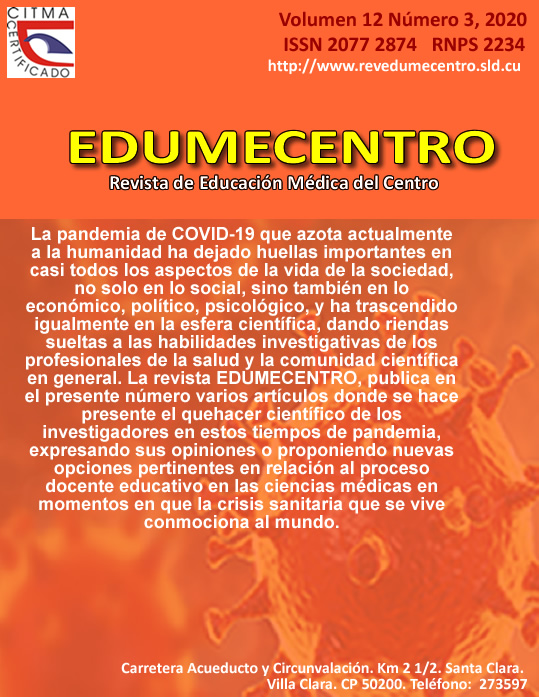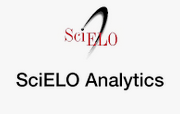Software educativo sobre patogenia de la enfermedad periodontal inmunoinflamatoria crónica en Periodoncia
Palabras clave:
aplicaciones de la informática médica, proyectos de tecnologías de información y comunicación, estudiantes, educación médica.Resumen
Fundamento: la incorporación de las tecnologías de la información y las comunicaciones como herramientas para la confección de medios de enseñanza ha mostrado su relevancia en el proceso de formación, facilitando el aprendizaje de los estudiantes.
Objetivo: diseñar un software educativo como soporte bibliográfico didáctico para el tema “Etiología y patogenia de la enfermedad periodontal inmunoinflamatoria crónica” de la asignatura Periodoncia.
Métodos: se realizó una investigación de innovación tecnológica en la Facultad de Estomatología de la Universidad de Ciencias Médicas de Villa Clara entre enero-febrero de 2019.Se utilizaron métodos teóricos: histórico-lógico, analítico-sintético e inductivo-deductivo; empíricos: grupo nominal y encuesta en forma de cuestionario inicial y final a los estudiantes; y matemáticos. Se utilizaron programas informáticos para el diseño del software: WebStorm, Photoshop y el Office.
Resultados: la mayoría de los estudiantes prefirió como medio de enseñanza para el estudio del tema un software educativo el cual contiene tres botones con hipervínculos hacia los contenidos en correspondencia con los objetivos del programa, además de vídeos, curiosidades, las bibliografías básica y complementaria y casos problemas.
Conclusiones: el software educativo PatogenioWeb en Periodoncia resultó valorado por criterios de especialistas y usuarios, quienes emitieron opiniones favorables sobre su diseño, utilidad, facilidad de interacción y aplicabilidad.
Descargas
Publicado
Cómo citar
Número
Sección
Licencia
Los autores que publican en esta revista están de acuerdo con los siguientes términos:- Los autores/as conservarán sus derechos de autor y ceden a la revista el derecho de primera publicación de su obra, el cuál estará simultáneamente sujeto a una Licencia Creative Commons Reconocimiento-NoComercial-CompartirIgual 4.0 Internacional (CC BY-NC-SA 4.0) que permite a terceros compartir la obra siempre que se indique su autor y su primera publicación esta revista.
- Los autores pueden establecer por separado acuerdos adicionales para la distribución no exclusiva de la versión de la obra publicada en la revista (por ejemplo, situarlo en un repositorio institucional o publicarlo en un libro), con un reconocimiento de su publicación inicial en esta revista.
- Se permite y se anima a los autores a difundir sus trabajos electrónicamente (por ejemplo, en repositorios institucionales o en su propio sitio web) antes y durante el proceso de envío, ya que puede dar lugar a intercambios productivos, así como a una citación más temprana y mayor de los trabajos publicados (Véase The Effect of Open Access) (en inglés).









